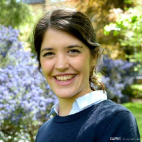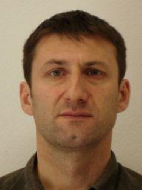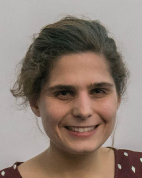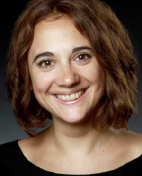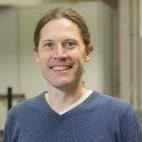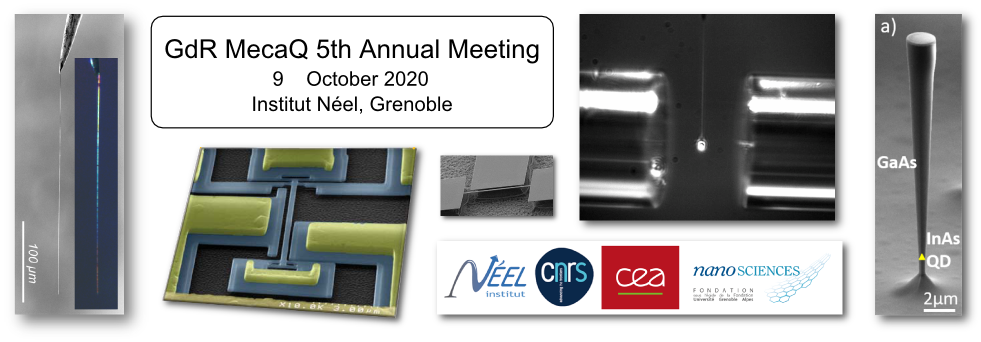
|
|
|
Tutorial SpeakersDr Natalia Ares Oxford University At University of Buenos Aires, Argentina, I completed a master in Quantum Chaos under the supervision of D. Wisniacki. For my PhD, I moved to Grenoble, France, where I worked under Silvano De Franceschi at CEA (Commissariat à l'énergie atomique). My PhD work was on electronic transport and spin control in SiGe self-assembled quantum dots. I held a Marie Skłodowska-Curie fellowship at Oxford. I started in the Materials Department at Oxford in 2013. I focus on on radio-frequency reflectometry for fast and sensitive readout of spin qubits and carbon nanotube electromechanics. I now aim at realising thermodynamics experiments and I work on machine learning for qubit scalability,
Dr Lucien Besombes CNRS - Institut Néel Lucien Besombes, born in 1974, is Directeur de Recherche at CNRS. He is an expert in optical properties of semi-conductor nanostructures including optical study and control of spin dynamics. He received his PhD degree from the University of Grenoble in October 2001. After a postdoctoral stay in the Quantum Optoelectronics group of the University of Southampton (UK) where he developed optical coherent control experiments on individual quantum dots, he joined in Oct. 2003 the Laboratoire de Spectrométrie Physique (University of Grenoble and CNRS) as a Chargé de Recherche CNRS to start the optical study of the spin properties of magnetic and charged quantum dots. He joined in 2008 the Institut Néel (CNRS-Grenoble). This gave him the opportunity to further develop his work on the optical properties of self-assembled quantum dots, with a more specific interest in optical control of spins and spin dynamics. He contributed to the field of single spin manipulation by important advances: first spectroscopy of QDs doped with a single magnetic atom, first demonstration of optical orientation of individual magnetic atoms in semiconductors, demonstration of resonant optical pumping and optical Stark effect on individual magnetic atoms. More recently, he started the study of spin-strain coupling for magnetic atoms in semiconductor nanostructures for possible application in hybrid spin-mechanical systems with a particular focus on Surface Acoustic Wave devices.
Dr Audrey Bienfait CNRS - ENS Lyon Audrey completed her Ph.D. in the Quantronics group at CEA Saclay (France) in 2016. There, she worked with Patrice Bertet on coupling bismuth donor spins to high quality factor small-mode-volume superconducting resonators. The experiments applied circuit quantum electrodynamics techniques to electron spin resonance and improved the spin signal detection sensitivity and implemented a spin initialization mechanism via the Purcell effect. She then realized a post-doc in the Cleland group at the University of Chicago (USA), where she coupled remote superconducting qubits using traveling phonons and realized acoustic interferometry experiments. In 2019, she joined the Quantum Circuit group as a CNRS researcher. She received the Bruker thesis prize and a Paris-Saclay university award for her graduate research work. Her current research interests are electronic spins, superconducting circuits, and various microwave transduction schemes.
Dr Silvia Viola Kusminskiy Max Planck Institute Erlangen Our group “Theory of hybrid quantum systems” is an independent research group funded by the Max Planck Society and located at the Max Planck Institute for the Science of Light. The group started in January 2018. We are interested in studying the interaction between light and collective excitations in condensed matter systems at the micro/nanoscale. Our recent interest lies in particular in optomagnonic systems, in which light is coupled coherently to magnetic excitations. This is an exciting line of research that brings together concepts of Condensed Matter and Quantum Optics, and is promising for applications in new quantum technologies. In our group we explore, both analytically and computationally, how to manipulate, store, and transfer information in platforms involving optomagnonic systems.
Pr Philip Treutlein University of Basel Philipp Treutlein, born in Reutlingen in 1976, studied physics at the Universities of Konstanz and Stanford in 1996-2002. At Stanford, he worked in the laboratory of Steven Chu on laser cooling and atom interferometry. Back in Konstanz, he joined Markus Oberthaler's group for his diploma thesis, investigating Bose-Einstein condensates in optical lattices. From 2002-2010, Philipp worked in the laboratory of Theodor W. Hänsch at LMU Munich and the Max-Planck-Institute of Quantum Optics, first as a doctoral student in Jakob Reichel's team and later as leader of his own group. During this time, he performed experiments with ultracold atoms in chip-based microtraps ("atom chips"). He demonstrated a chip-based atomic clock and an atom interferometer, carried out first experiments on quantum metrology with entangled atoms, and explored interfaces of atoms and mechanical oscillators. In 2010, Philipp was appointed as a tenure-track assistant professor at the University of Basel, where he set up a group working on ultracold atoms, optomechanics, and hybrid quantum systems. In February 2015 he was promoted to associate professor and in 2018 to full professor. Our mission is to explore the quantum physics of atoms and to exploit them for novel quantum technologies. We use techniques of laser cooling and trapping to prepare atomic gases at temperatures of billionths of a degree above absolute zero. These ultracold atoms are an exceptionally well-controlled quantum many-body system, which allow us to explore fundamental questions of entanglement and decoherence and to push atom interferometry to the ultimate limits of precision. Moreover, we develop quantum interfaces between atoms and solid-state systems such as mechanical oscillators or semiconductor quantum dots. Such interfaces where quantum systems of very different nature interact will play an important role in future quantum technology.
|
